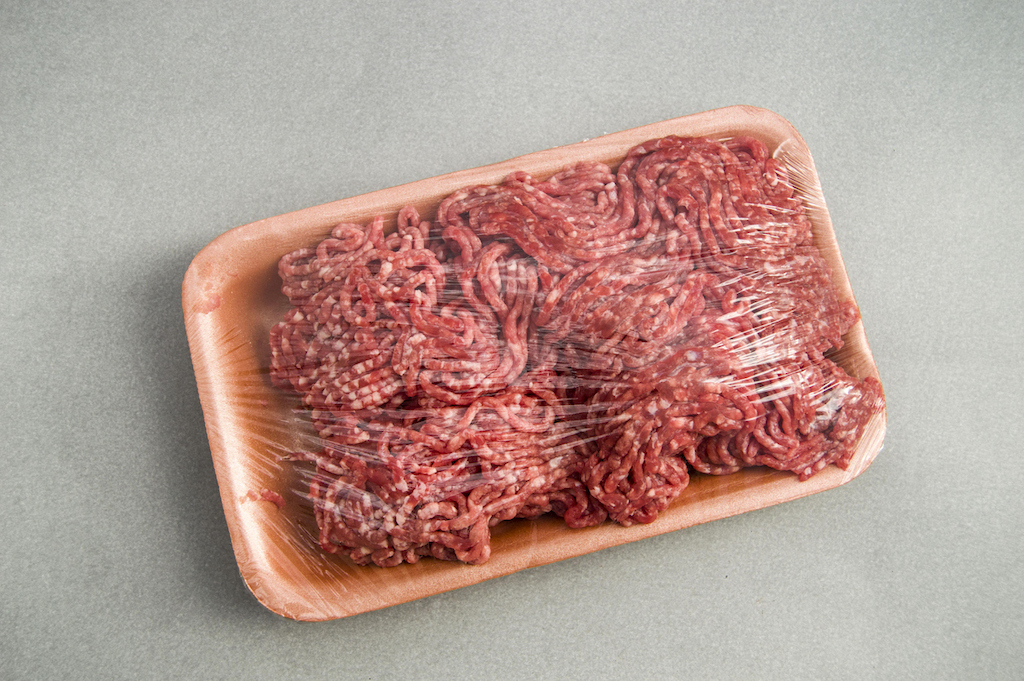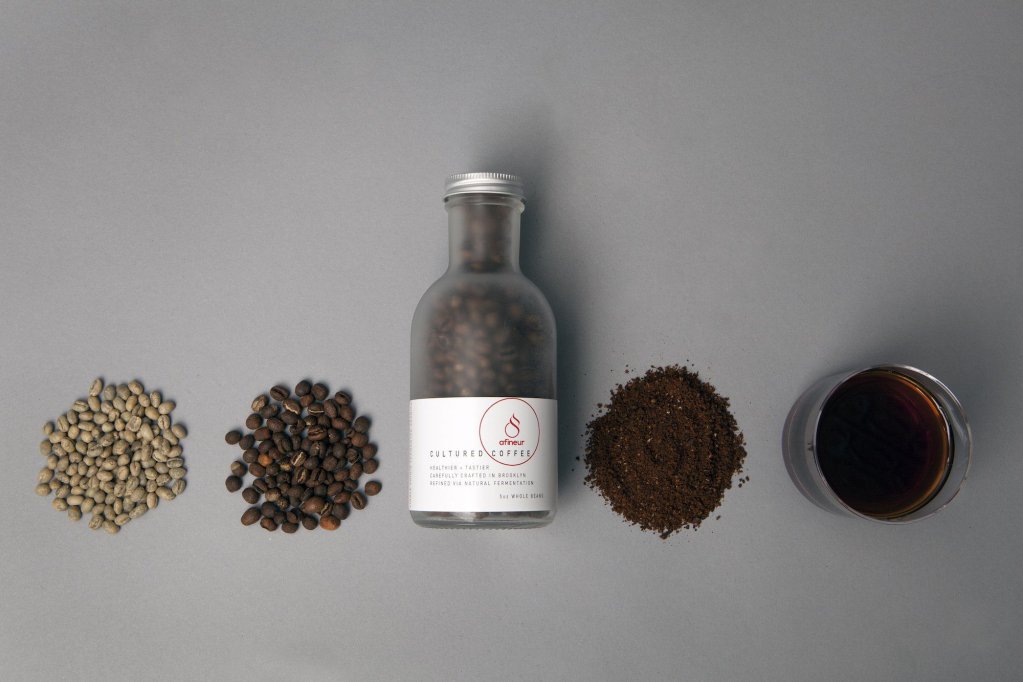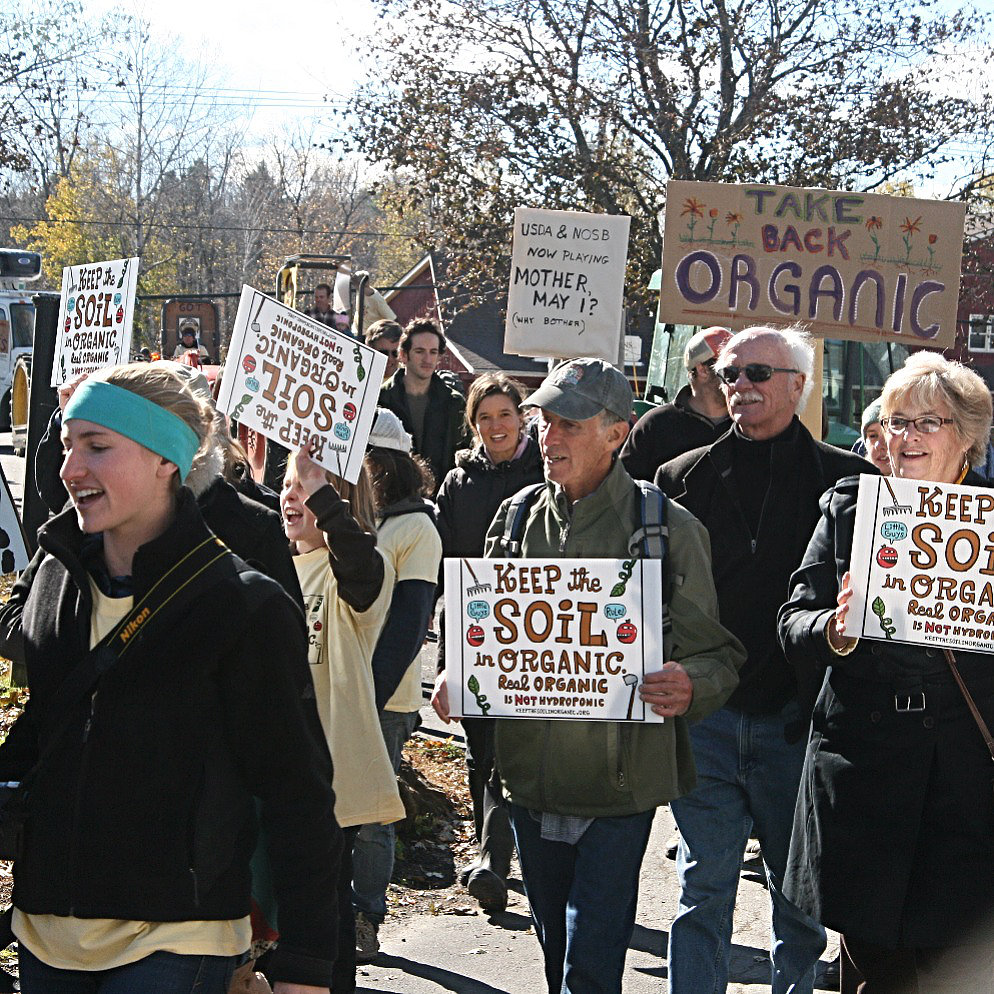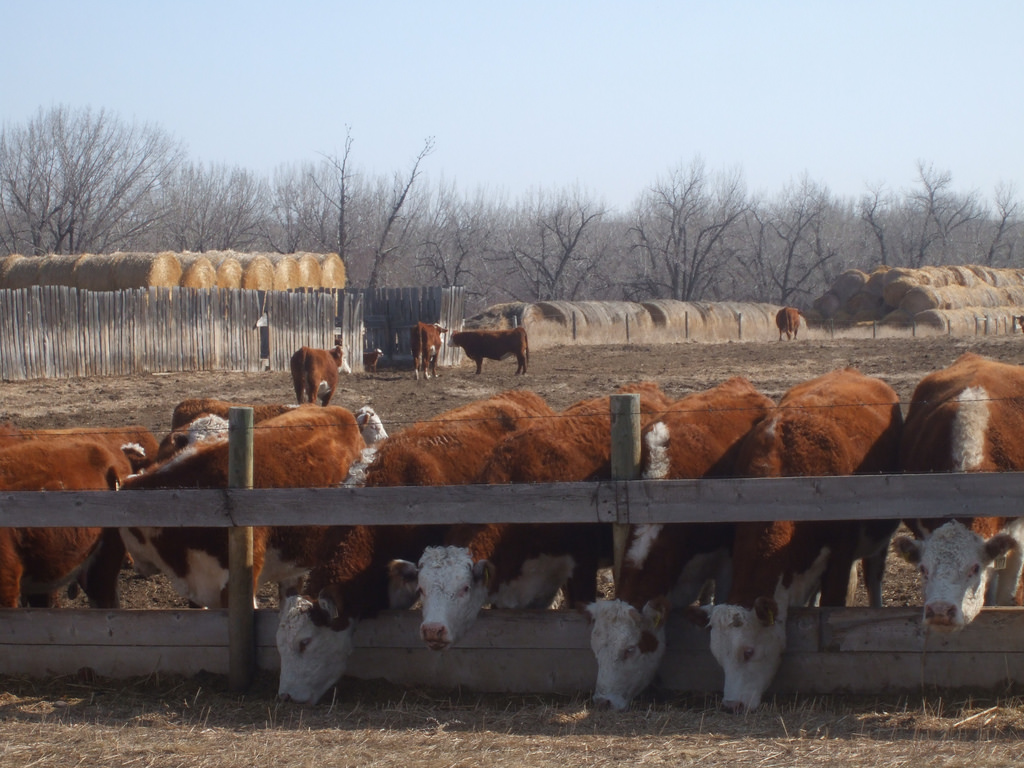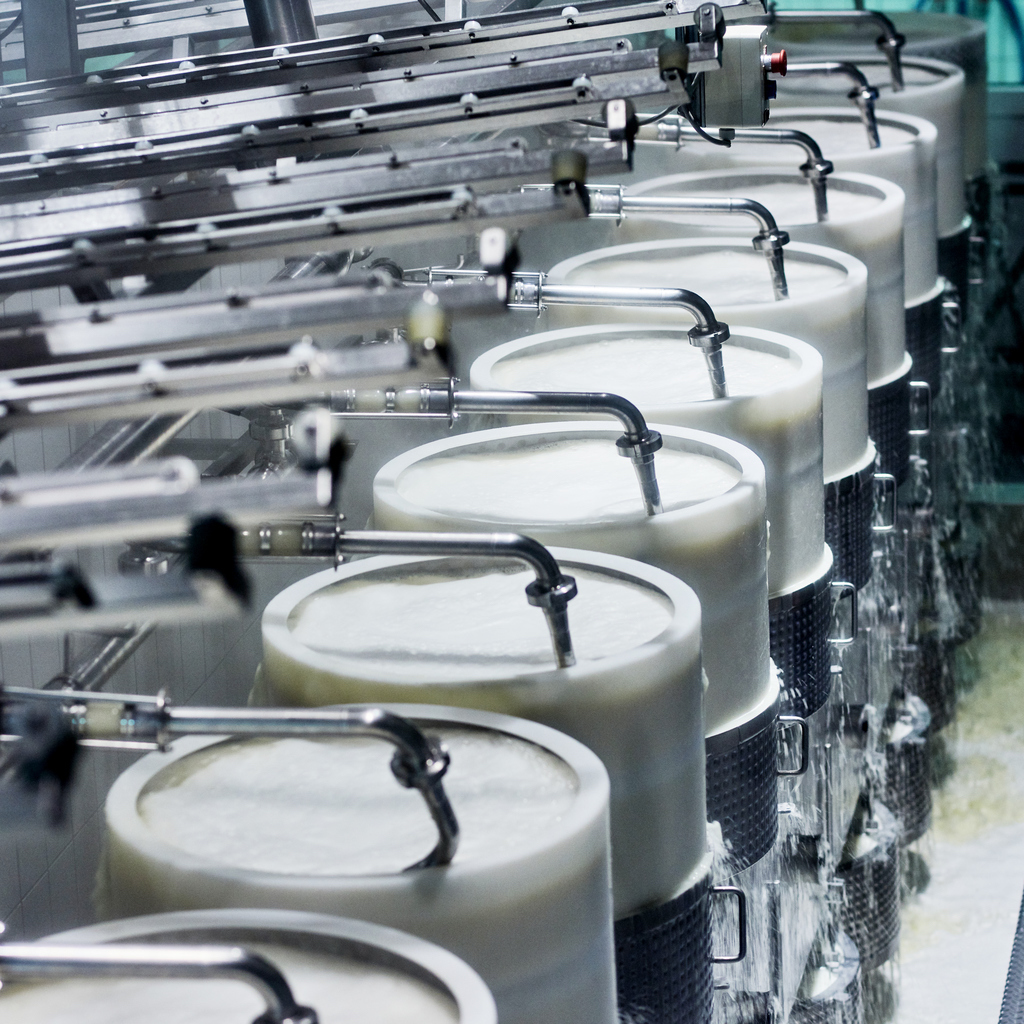
iStock / Zora Zhuang
By now, you may have heard the news: The United States has too much cheese on its hands. This country has long been the world’s most prolific cheesemaker, cranking out 5 million metric tons in 2017 alone—twice what Germany, the distant runner-up, produced that year. And though Americans love dairy products, consuming an average of three pounds of cheese per person every month, we’re still making cheese faster than we can eat it—and faster than we can export it, too. This overproduction explains why we’re in the middle of an historic cheese glut, with 1.39 billion pounds of unsold cheese in storage, according to The Washington Post, the largest such surplus in American history.
This market saturation—and its dire economic effects on dairy farmers—has been widely covered in major news outlets. But media coverage of America’s surging cheese production tends to overlook one crucial aspect of it: For every wheel of cheese dairies produce, they make a lot more whey, the watery cheese liquid you’ve seen in freshly opened containers of yogurt. All that whey has to go somewhere, and the matter of its disposal and reuse have become intractable problems for the industry.
 Uplands Cheese
Uplands Cheese In the process of making cheese, producers are left with a whole lot of whey, which is the watery liquid you can see floating at the surface of the cheese curds above. All that whey has to go somewhere—but where?
Whey, the slop left over when curds are strained from liquid milk, is an abundant byproduct of milk and yogurt production. A pound of cheese generates nine pounds of whey. Michael Neuwirth, senior director of external communications at Danone North America, says making eight ounces of Dannon’s Oikos Greek Yogurt requires 24 ounces of milk—leaving behind a pint of whey when production is finished. Pound for pound, then, dairies produce much more whey than they do anything else—you might more properly call them whey-making machines. From the biggest producers to small hobby creameries, the dairy industry is putting on its thinking cap to find new ways to contend with the onslaught of the whey tsunami.
???
When I call Andy Hatch, owner of Uplands Cheese, an artisan cheesemaker in Dodgeville, Wisconsin, a woman puts me on hold while she goes to look for him. “I’m sorry,” she tells me, after a few minutes’ wait. “He’s literally elbows-deep in curds right now.”
Uplands produces 100,000 pounds of cheese annually during the six months of the year when its cows are on pasture. That’s nothing compared to most Wisconsin dairies, which can make 2 million pounds a year and still be considered “small,” Hatch says. But Uplands’s modest output has been widely celebrated; its Pleasant Ridge Reserve is reportedly the most awarded cheese in U.S. history. And yet whey disposal has proved to be a major obstacle for the business.
Hatch and other small-scale cheesemakers typically dispose of their whey however they can: by spreading it on their fields, or feeding it to animals. But while whey can act as a fertilizer, applying too much can pollute waterways, killing fish and other aquatic creatures. As a result, the amount that can be used in a given area is heavily regulated. Uplands also works with a pig farmer who feeds some of the sweet whey to his animals with apparently delicious results. While the idea of a dairy farmer making cheese then using leftovers to feed pigs that provide another local food source might sound idyllic to some, Hatch says it creates “some real challenges” (like the need to create or team up with an entirely separate form of animal agriculture) and extra steps for everyone involved.
Large cheesemakers have processing facilities that can convert whey into value-added ingredients like whey protein powder. But the smaller cheesemakers don’t produce enough to have access to those markets, says Lisbeth Goddik, a professor of food science and technology at Oregon State University. “Over the last 15 years we’ve gotten more and more of those artisan cheesemakers and they’ve been left with few options.”
 Uplands Cheese
Uplands Cheese .
The disheartening reality is that, at the current moment, smaller cheesemakers have little on their side but wishful thinking. “If I could make it disappear from my farm, I would,” Hatch says.
? ? ?
As difficult as sweet whey disposal can be for artisanal cheesemakers, Greek yogurt makers probably have it worse. The byproduct created through their production process, “acid whey,” has few uses in commercial food formulation. As a result, the makers of increasingly popular Greek yogurt brands are trying to find cost-effective ways to deal with this byproduct.
“By and large most of our manufacturing locations are in rural areas,” Danone’s Michael Neuwirth says. This allows them to purchase from local dairy farms, process milk into yogurt at their plants, and give the leftover whey to local farmers. “Pigs love it,” he says.
But making such factory-to-farm arrangements can be expensive. Strained yogurt maker Chobani recycles 100 percent of its whey through partnerships with local farms, according to a spokesperson. But the company must pay farmers as much as $300 per 6,000 gallon truckload to make it worth their while, according to one farmer who lives 10 miles from the Chobani factory in upstate New York.
At the same time, biodigesters aren’t the most cost-effective method of generating electricity. Just look at Fage yogurt’s Johnstown, New York headquarters, where anaerobic digesters use the company’s whey to power the local wastewater treatment plant. What looks like an ideal, symbiotic relationship on the surface is really a less-than-perfect solution. Not only is there more whey than the digesters can process, NPR’s Dan Charles reports, “it costs Johnstown’s taxpayers more to run these generators than it would cost to buy the same amount of power from the local utility.”
Juan Guzman, who has a Ph.D from Cornell University in biological and environmental engineering, started a company called Capro-X which will build and sell equipment that turns acid whey into bio-oil. He expects that this bio-oil could be used to replace some products currently made out of palm oil, an industry which has been linked to human rights abuses, deforestation, habitat loss for endangered species, and a host of other problems. So far he’s tested a prototype that processes roughly a liter of acid whey—just a drop in the bucket—but he’s confident that the technology will still work at scale.
 Uplands Cheese
Uplands Cheese Some small cheese producers feed whey to animals or spread it on their fields. However, applying too much whey to fields can pollute waterways
Since larger brands already maintain their own digesters to process acid whey into a more environmentally friendly form, Guzman is hoping to tailor his product to co-packers—single, thousand-gallon-per-day production facilities where multiple small businesses can make their products. Capro-X is planning to ask for a minor cost for the installation and a service fee per gallon of treated whey. Then, Guzman says, “We take care of everything—finding a buyer for the oil, processing it, selling the oil, and returning some of the sales to the customer so they’re getting some of the profit.”
Currently, turning whey into energy is still the best way to process large amounts of it, despite drawbacks. But some researchers are looking for a solution that can be viable for smaller operators and potentially create a new revenue stream. To do so, they’re hoping to find new ways to use acid whey as an ingredient in food or beverages.
Oregon State’s Lisbeth Goddick is working on research that may help small manufacturers find ways to turn whey into vodka, something that companies like Vermont Spirits have already tried. Not only are micro-distilleries popular in Oregon, but Goddik says that converting whey into vodka is “not tremendously expensive.” One whey-based distillery in Tasmania is “making more money from their vodka than they are on their cheese,” she adds.
Paul Hughes, an assistant professor of distilled spirits at Oregon State, and Goddik’s partner, says the flavor of the finished vodka is “more neutral than we anticipated.”
“We thought we’d be getting distilled cheese flavor,” he says. “Cheese is great in some circumstances but I’m not expecting it in a drink.” At least in the small batches they’ve created so far, the spirit is so clean that it could be easily turned into a gin or another flavored clear spirit.
This approach to vodka-making works with both sweet whey from cheese and acid whey from Greek yogurt. But while distillation filters out lactose, the aspect of whey responsible for causing algal blooms or decreased oxygen levels when it gets into water, only about two-and-a-half percent of the whey turns into ethanol, leaving a lot of post-distillation whey to dispose of, Goddick says. Because the waste is less of an environmental pollutant, it might be cheaper to dispose of post-distillation, but it’s still an area that needs to be ironed out.
 Vermont Spirits
Vermont Spirits .
Meanwhile, on the East Coast, Samuel Alcaine, an assistant professor of dairy fermentations at Cornell University (and an ex-brewer) is working on another tipsy solution to the influx of whey. “I put on my brewing hat: there’s sugar here and all this lactose—maybe there’s a way to make something interesting,” Alcaine says. It wasn’t easy—one particular challenge was finding the right yeast that could break down the lactose during fermentation—but ultimately Alcaine was able to create a beer made entirely from whey. “We’ve found that it pairs pretty well with citrus fruits and ginger,” he says.
Interestingly, because of the lower sugars, the alcohol content of the finished beer hovers around 3 percent by volume, giving it a lot of potential as a session beer. Alcaine also notes that the end result is high in potassium and calcium. “You can’t necessarily make health claims with alcoholic products,” he laughs, “but the calcium is equivalent to that of milk.” With sour flavors increasing in popularity—from kombucha to vinegar tonics and sour beer—Alcaine thinks whey beer has a lot of promise. “There’s a potential to simply replace the water in the [sour beer] brewing process and replace it with acid whey,” he says. “Then you already have the sourness.”
Danish company Arla Foods Ingredients is entirely dedicated to finding new uses for acid whey in particular. “In most cases, it’s an additive to improve the quality of the finished product,” says Torben Jensen, senior category and application manager at Arla. But it can also be used by cost-conscious bakeries as an inexpensive egg replacement. “My job is to find ways of using whey protein,” Jensen says. Clearly, there’s plenty of work to go around. The company’s motto could describe the effort so many researchers and corporations are making to find whey’s silver lining: “We’re here to discover and deliver all the wonders whey can bring to people’s lives.”


